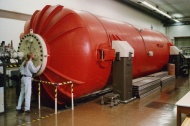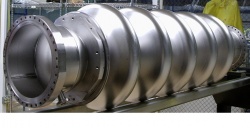Difference between revisions of "Main Page"
| Line 51: | Line 51: | ||
* understand the mechanics of an accelerator | * understand the mechanics of an accelerator | ||
* design and utilize methods of manipulating and focusing a beam of charged particles | * design and utilize methods of manipulating and focusing a beam of charged particles | ||
| − | * implement the <sup>27</sup>Al (p,n) <sup>27</sup>Si and <sup> | + | * implement the <sup>27</sup>Al (p,n) <sup>27</sup>Si and <sup>11</sup>B (p,n) <sup>11</sup>C nuclear fusion reactions |
</div> | </div> | ||
Revision as of 11:29, 7 May 2010
Center for Accelerator Science and Education |
|
The Center for Accelerator Science and Education (CASE) will be hosting an Accelerator Physics Workshop for high school physics teachers and students from July 26 - July 30 2010. |
Accelerator Physics Workshop
|
The ProgramAccelerators are complex and versatile machines, whose applications are generally thought to be restricted to the realm of high-energy physics. However, the vast majority of accelerators are currently being used in the areas of medical physics and industry. Most notably, research has shown that accelerators are capable of providing medical treatments that produce results incomparable to any other modern techniques, and therefore they (and the scientists that operate them) are indispensable resources. In this one-week workshop, participants will:
|
RegistrationParticipation in this workshop is free of charge but will be limited to 20 students (and unlimited teachers). To apply, please complete the form below and return it (e-mail preferred!) to Richard Lefferts The Accelerator Workshop Registration Form will be available shortly. Please check back!
|
More InformationThe Center for Accelerator Science and Education is a joint initiative of Stony Brook University and Brookhaven National Laboratory. Please browse our website for more information about
|

